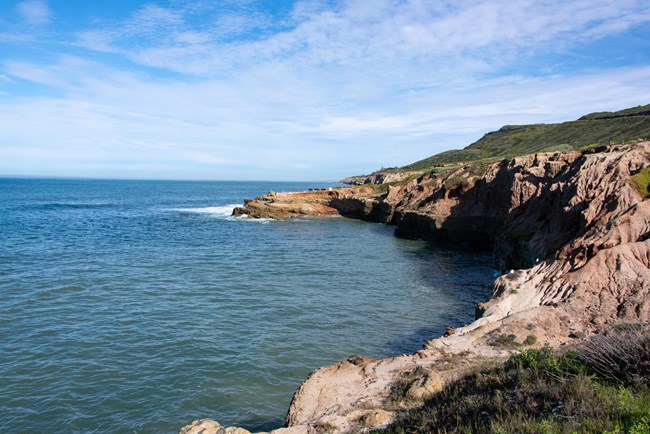
NPS Photo/A. Rosales High tide at the intertidal area of Cabrillo National Monument. Lots of water, but no tidepools! 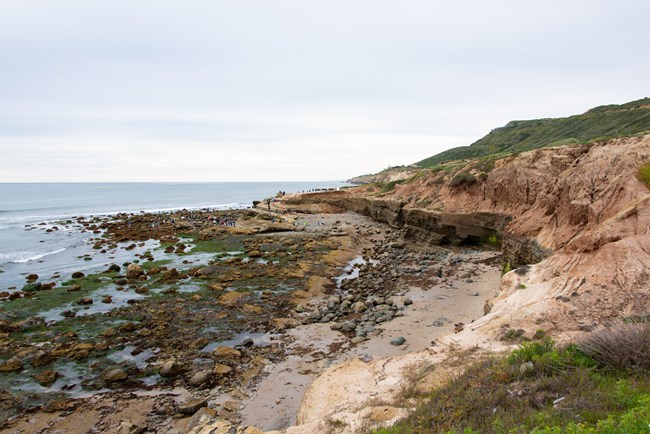
NPS Photo/A. Rosales Now that's more like it! A good example of low tide - let's begin our exploration! 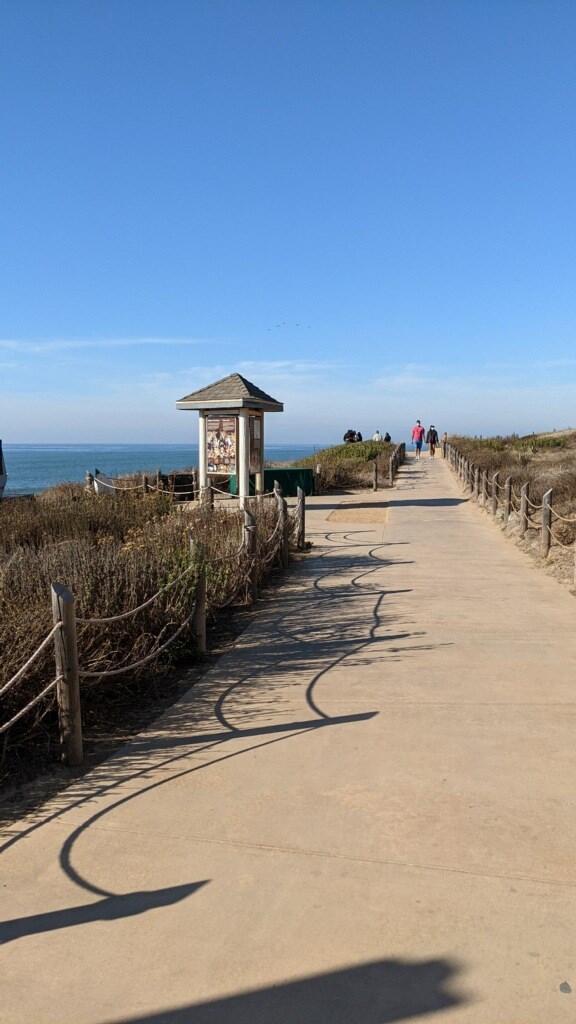
NPS Photo/P. Geisler When you arrive at the tidepools, stop first at the kiosk at the trailhead and learn how to explore the tidepools. Here you can find the rules to protect the tidepools as well as have a safe enjoyable visit. Visit the Education Table if volunteers are working. 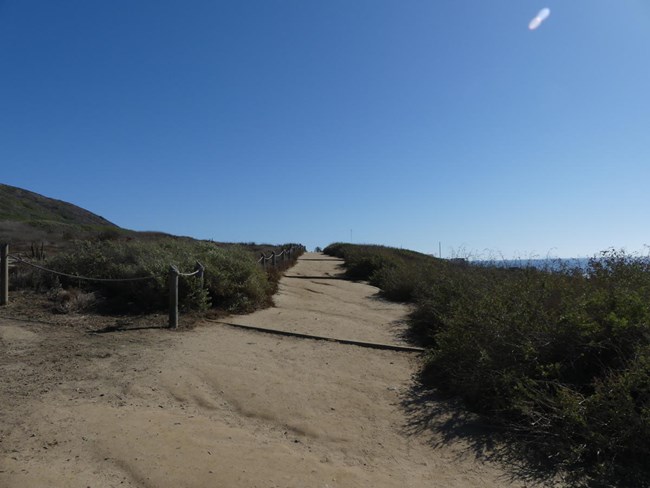
NPS Photo/J. Tam 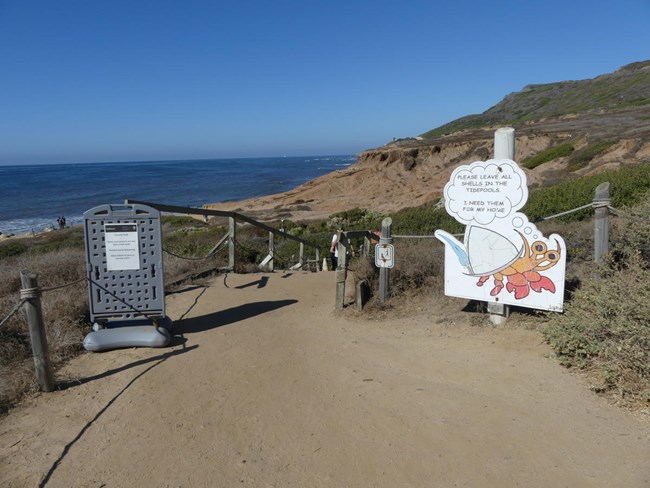
NPS Photo/J. Tam 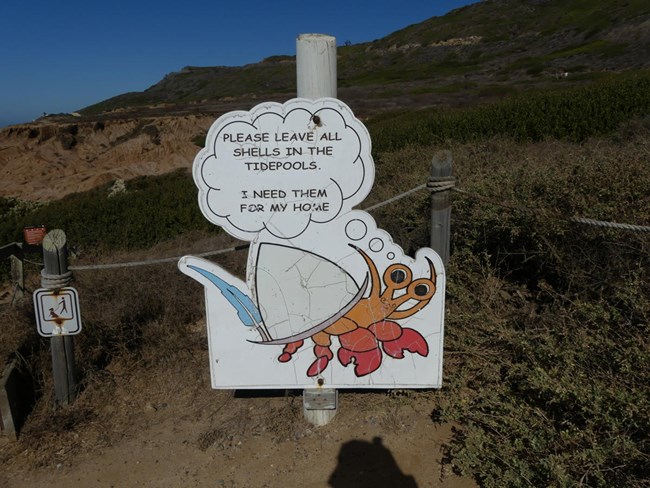
NPS Photo/J. Tam Please do not pick up tidepool animals, throw or stack rocks, carve graffiti into the rocks or pick the flowers. You want to leave the area in a natural state, the way you found it. We thank you and Crabillo thanks you. 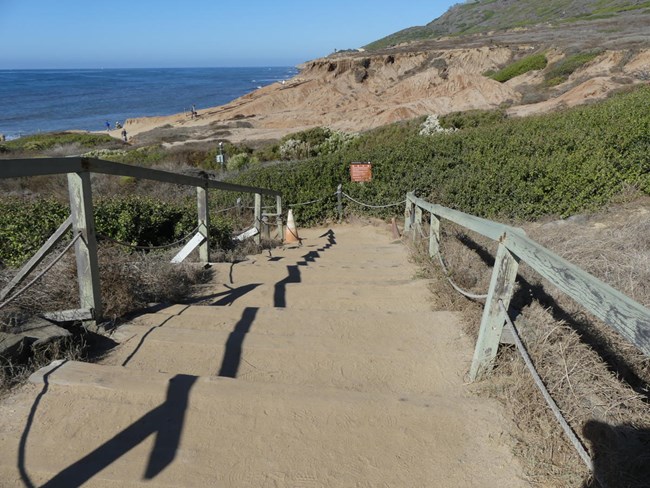
NPS Photo/J. Tam 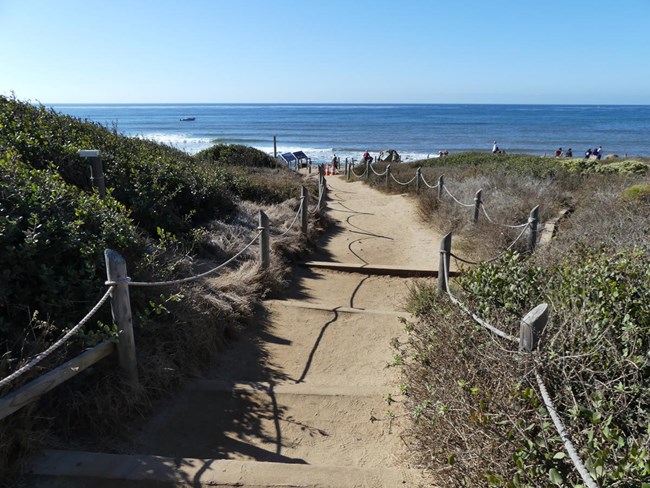
NPS Photo/J. Tam 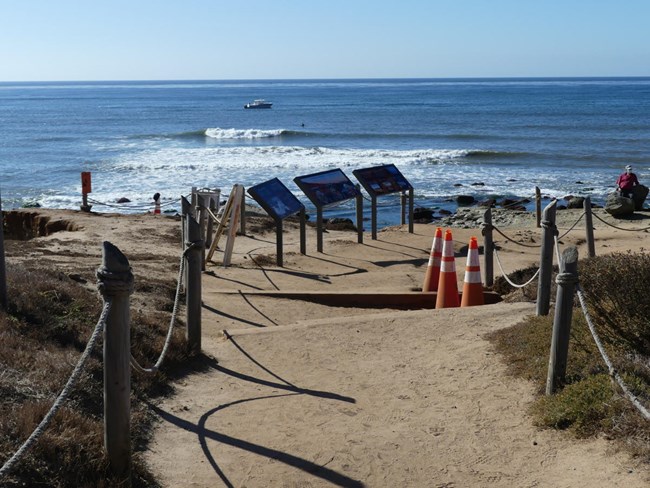
NPS Photo/J. Tam 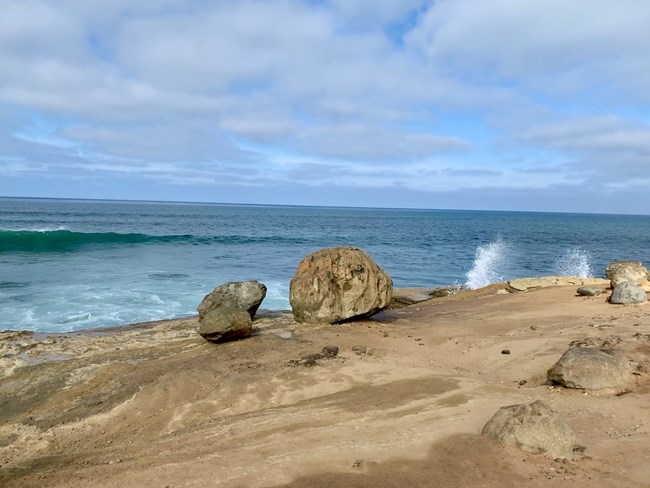
NPS Photo/D. Wieder 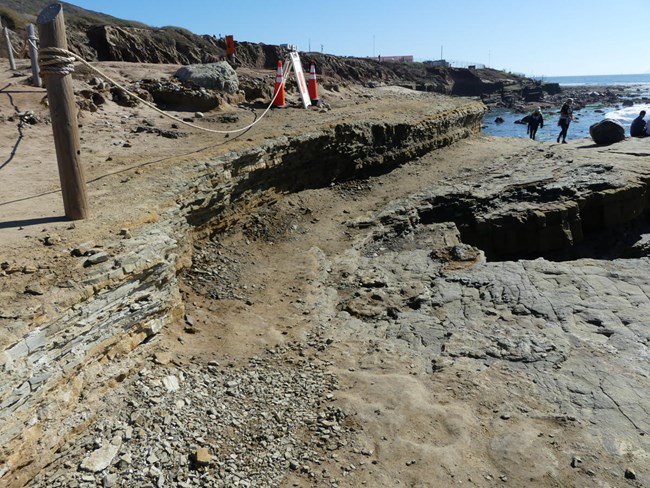
NPS Photo/J. Tam The rocks you are walking on are soft sandstone and erode very easily. Watch your step as you walk past a narrow opening to the tidepools.
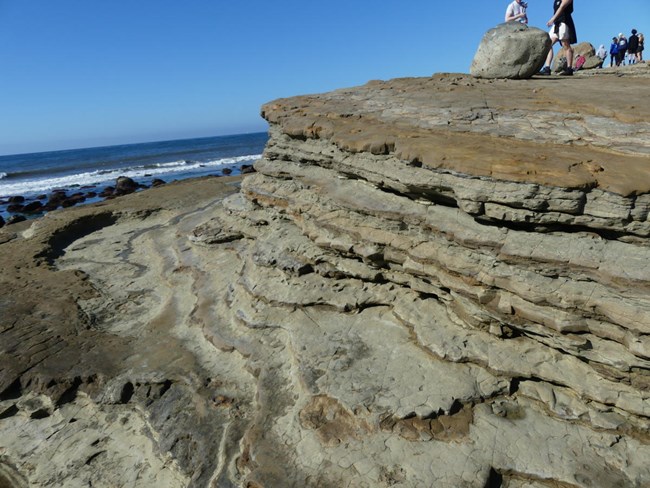
NPS Photo/J. Tam 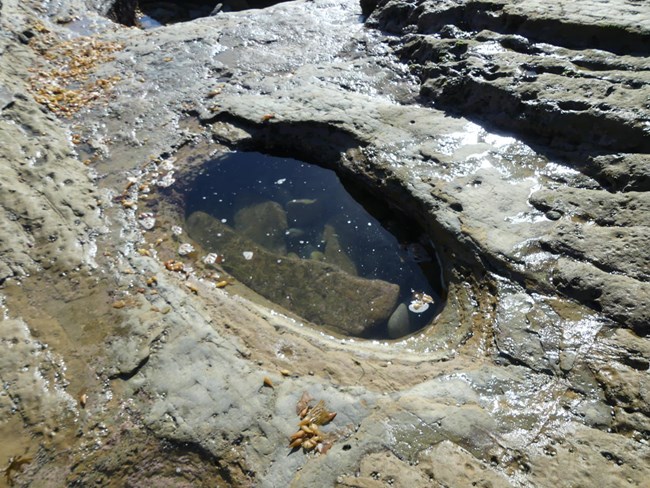
NPS Photo/J. Tam Take some time to look in here because a variety of critters can be found here. You will find shore crabs and woolly sculpin fish among other things. In the past we have even seen sea stars in this pool, so you never know. 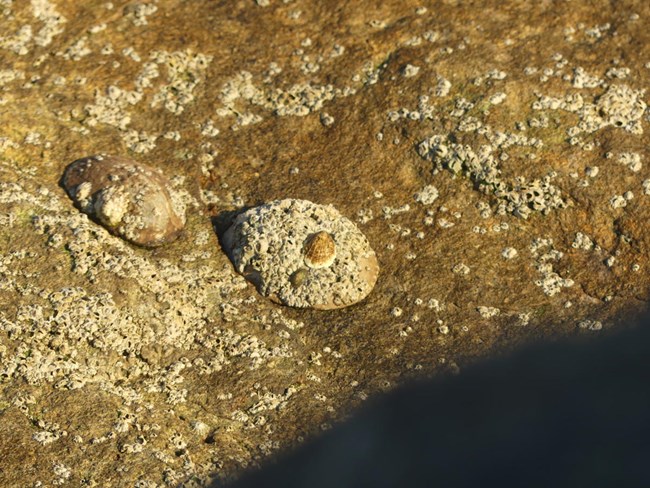
NPS Photo/J. Tam It's very important that these, and everything else, should not be pried off the rocks. Their suction to the rocks is how they stay alive when the tide is out. You can even see barnacles or other small animals attached to the Owl Limpet shell. 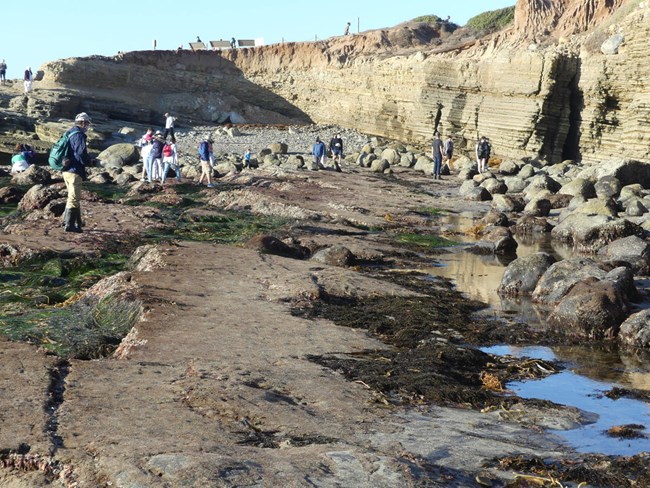
NPS Photo/J. Tam Venture out and discover what waits in the pools between the rocks after the tide has receded. 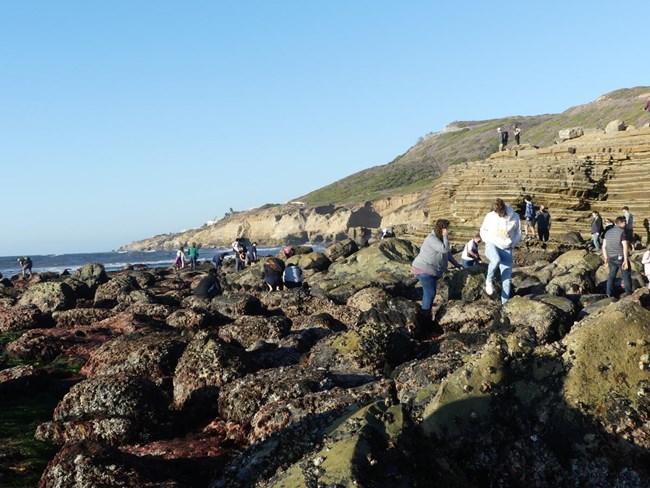
NPS Photo/J. Tam 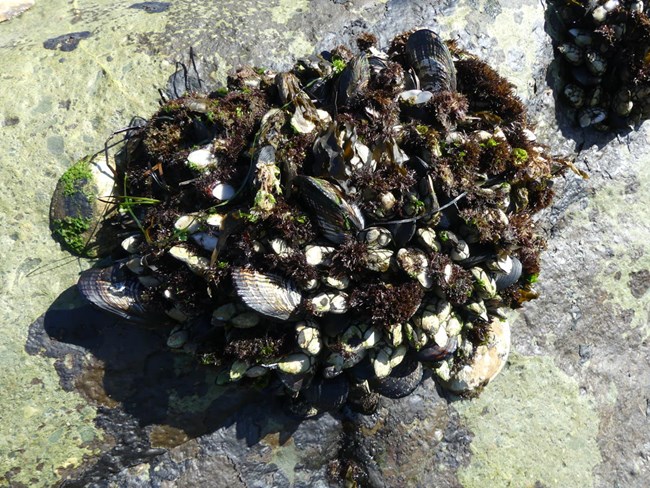
NPS Photo/J. Tam 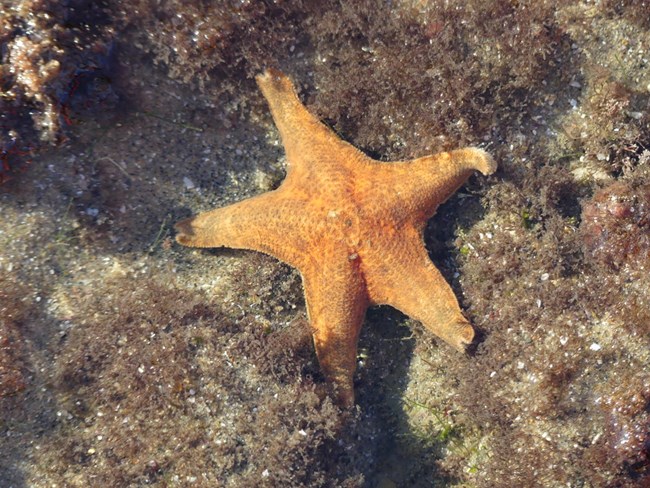
NPS Photo/J. Tam 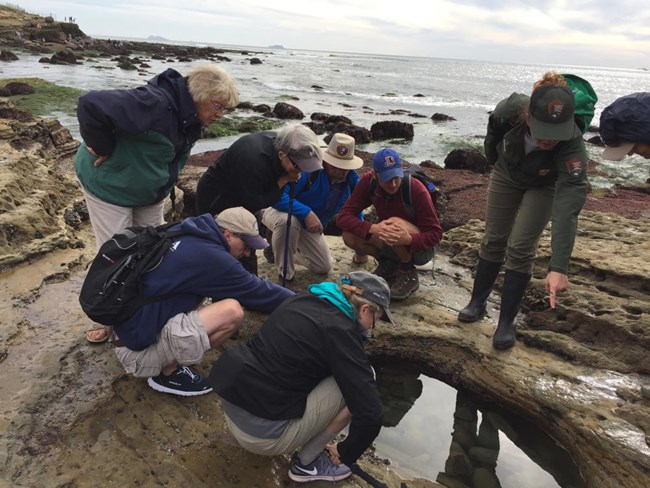
NPS Photo/D. Wieder Don't be afraid to crouch down low to get a close-up view. Look at the base of rocks, but don't turn any over. 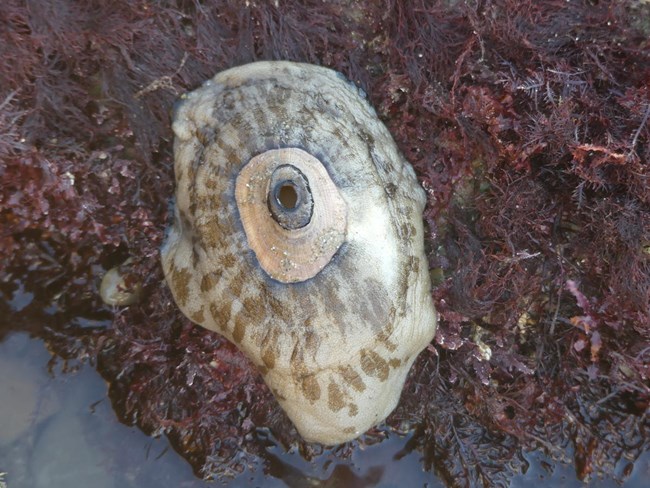
NPS Photo/J. Tam 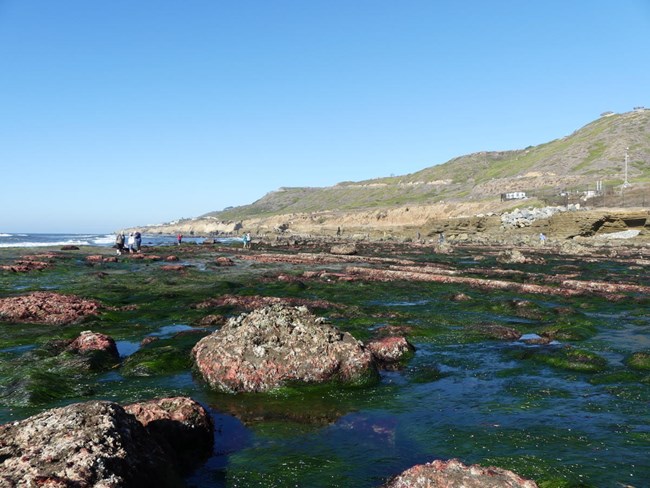
NPS Photo/J. Tam Look closely where the surf grass is because various tidepool critters live here. 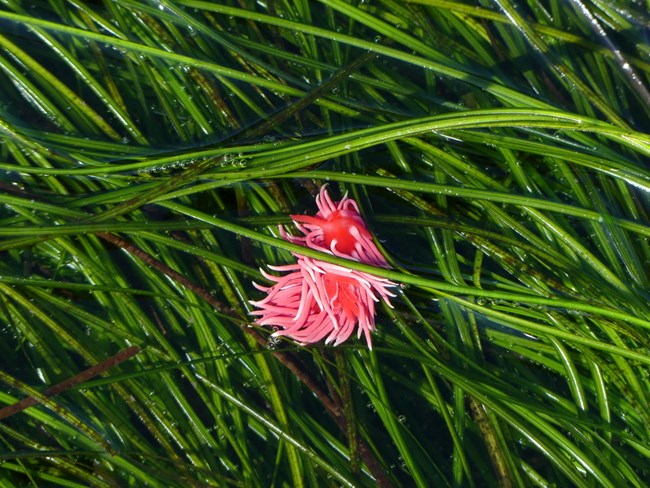
NPS Photo/J. Tam 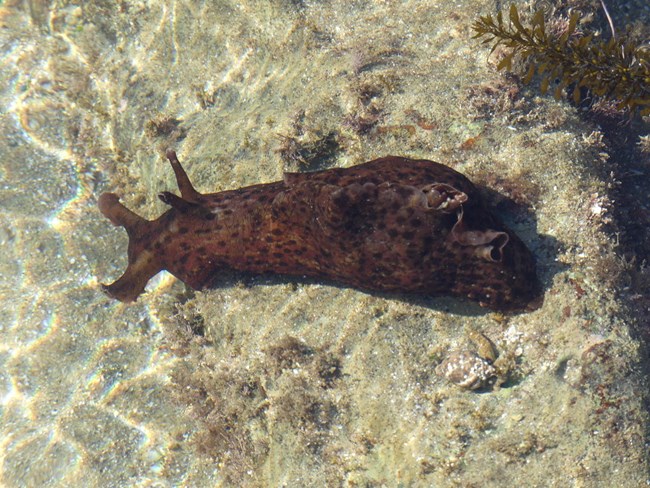
NPS Photo/J. Tam Don't try to pick them up because they can ink you, like an octopus, if they get stressed. Just look with your eyes. 
NPS Photo 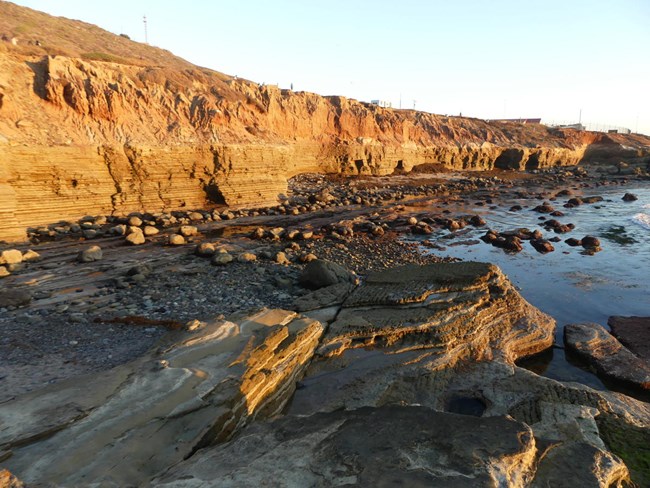
NPS Photo/J. Tam When you leave, be sure to discover the beauty of the high splash zone, located by the balanced rocks. Be careful, however, and watch your step: you are now back on top of the cliffs. 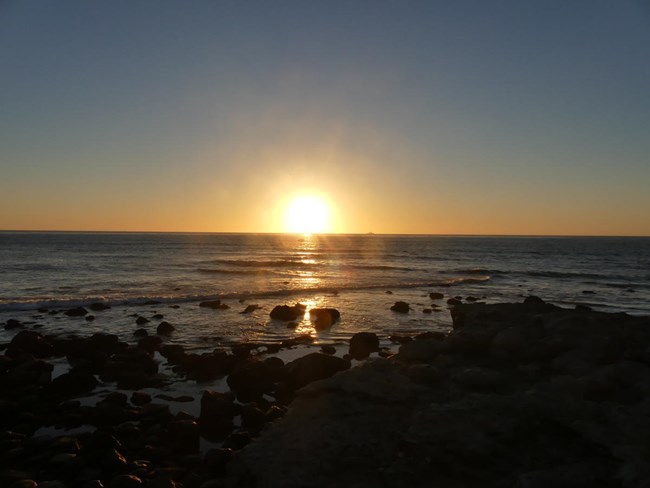
NPS Photo/J. Tam The end of another picture-perfect day at the tidepools of Cabrillo National Monument. What did you discover? |
Last updated: December 18, 2020
